Welcome to our free classical music site

Do you write about classical music? Are you a blogger? Want to team up with Classical Connect? Send us a message, let's talk!

Do you write about classical music? Are you a blogger? Want to team up with Classical Connect? Send us a message, let's talk!
January 31, 2014. Schubert. Today is the 127th birthday of Franz Schubert, who was born in 1797 in a suburb of Vienna. To celebrate this event, we publish an article on one of Schubert’s last composition, the song cycle Schwanengesang (“Swan Song”).
The fourteen songs of Schwanengesang are among the last of Schubert’s compositions. Unlike his previous cycles, Die schöne Müllerin and Winterreise, Schwanengesang is not based on the poetry of a single poet, but instead three: Ludwig Rellstab (Nos. 1-7), Heinrich Heine (Nos. 8-13) and Johann Gabriel Seidl (No. 14). However, Schubert’s intentions for the cycle remain unclear. All but the last song were copied out in the composer’s hand on consecutive manuscript pages and in the traditional performance order, which is an indication that Schubert may have regarded them all as a single coherent work. However, in early October, Schubert offered the Heine songs to the Leipzig publisher Probst, a contrary move that at least shows he either thought those songs separable from the preceding ones based on the poetry of Rellstab, or was willing to divide the work for purposes of publication.
Since Schubert’s ultimate intentions for these songs will never be known, or quite possibly was never fully decided upon by the composer himself, the task of organizing the cycle for publication was left up to Tobias Haslinger, who published Schwanengesang, as well as Winterreise, not long after Schubert’s death. Haslinger respected Schubert’s order as presented in the manuscript, but appended the lone Siedl song, Die Taubenpost, believed to be Schubert’s last completed work.
Whatever may have been Schubert’s intentions for the ordering and structure of Schwanengesang, Haslinger’s edition makes a compelling case for its current representation as a complete cycle of fourteen songs. The Rellstab songs, which make up the first half of the cycle, are overall lighter in nature, touching only briefly on darker, forlorn subjects. The first of these songs (Liebesbotschaft) opens the cycle in G major. From there, the following six pass through a fairly logical progression of keys to the last song (Abschied), which closes the first half in E-flat major, a choice of key that would have pleased any Romantic. The six Heine songs that make up the bulk of the second half, however, deal with far gloomier moods and plunge deeper into the dreary recesses of the human heart. Der Atlas opens the second half in G minor, a shadow of the cheery G major that began the cycle. From thence, each song begins in a key related to the last—the sole exception being the tragic and haunting Der Doppelgänger in B minor following the serene C major of Am Meer. Though quite different in tone, Die Taubenpost provides at least a proper structural close, even if its sudden cheerful mood seems out of place following the immense weight of the Heine songs. In G major, it echoes the confident love of Liebesbotschaft, bringing the cycle, in terms of key and theme, to an adequate close.
You can hear the songs by clicking on their titles. Dozens of wonderful singers recorded Schwanengesang. This one is a classic, with the great German baritone Dietrich Fischer-Dieskau and his partner, the British pianist Gerald Moore. These recordings were made in the 1950s. The complete cycle would be heard here.Permalink
January 27, 2014. Mozart, a trip to Paris. Today is the anniversary of Wolfgang Amadeus Mozart: he was born on January 27th of 1756. When he was 17, he received employment at the court of the Prince-Archbishop of Salzburg. By 1777 he found the_by_Lange_1782.jpg) situation stifling: not only was his pay very low, he also wanted to compose large-form pieces, especially operas, and the opportunity in Salzburg was limited. (Mozart was interested in operas all his life. He wrote his first one when he was 11; Il re pastore, written in 1775 when Mozart was 19, is still staged today). In August of 1777 Mozart resigned his position hoping for better employment elsewhere. Traveling with his mother (father Leopold stayed back in Salzburg) he went to Mannheim, which in those days boasted the best orchestra in all of Europe. In Mannheim he fell in love with Aloysia Weber, seventeen years of age and a budding soprano (he would eventually marry Aloysia’s younger sister, Constanza). He was sufficiently enamored to compose two Recitatives and arias for Aloysia. Unfortunately, Mozart couldn’t find any decent employment at the Palatinate court of the Mannheim rulers and, accompanied by his mother, he continued to Paris.
situation stifling: not only was his pay very low, he also wanted to compose large-form pieces, especially operas, and the opportunity in Salzburg was limited. (Mozart was interested in operas all his life. He wrote his first one when he was 11; Il re pastore, written in 1775 when Mozart was 19, is still staged today). In August of 1777 Mozart resigned his position hoping for better employment elsewhere. Traveling with his mother (father Leopold stayed back in Salzburg) he went to Mannheim, which in those days boasted the best orchestra in all of Europe. In Mannheim he fell in love with Aloysia Weber, seventeen years of age and a budding soprano (he would eventually marry Aloysia’s younger sister, Constanza). He was sufficiently enamored to compose two Recitatives and arias for Aloysia. Unfortunately, Mozart couldn’t find any decent employment at the Palatinate court of the Mannheim rulers and, accompanied by his mother, he continued to Paris.
Leopold sent a letter to Baron Melchior Grimm, a fellow German who lived in Paris, was a member of the Parisian society who corresponded with Catherine the Great of Russia and Frederick II of Prussia, and, in those enlightened times, was also an Encyclopedist and a friend of Rousseau. Responding to Leopold’s requests, Grimm took Mozart under his wing. Unfortunately their relationship turned out to be difficult and pretty soon they parted ways, with Grimm passing Mozart to his mistress, Mme d’Epinay. Despite all her connections in high society, she couldn’t help him much either. What’s worse, her relationship with Mozart, initially very warm, also soured. It seems that the 22-year-old Mozart was a difficult protégé: in Paris he felt ill at ease, was passive and disagreeable. And he didn’t like the French. “Their manner now borders on rudeness and they’re frightfully arrogant,” he wrote to Leopold. To make the situation even worse, Mozart’s mother fell ill and died on July 3, 1778. With no money, Mozart got into debt; by September of 1778 he left Paris. This was an unfortunate trip, but Mozart continued to compose even under these difficult circumstances. While in Paris, he wrote yet another symphony, his 31st. It was premiered in June of 1778 at the home of the Ambassador of the Prince-Elect of Palatinate to France. Several days later it was also performed in public. We now know it as the "Paris Symphony," one of Mozart’s most famous. Here it is, performed by the English Sinfonia, one of Britain’s oldest chamber orchestras. Sir Charles Groves is conducting.
PermalinkJanuary 20, 2014. We at Classical Connect mourn the passing of Claudio Abbado, one of the greatest conductors of his generation. Maestro Abbado died at his home in Bologna. He was 80.
January 20, 2014. Dutilleux and Willaert. A year ago, when we celebrated Henri Dutilleux’s 96th birthday, he was living in Paris and still working. He died five months later, on May 22nd, leaving behind a major body of work, and already a classic. Dutilleux was born on January 22nd, 1916 in Anger in western France. He studied at the Paris Conservatory, graduating in 1938. After the War, he worked for many years at Radio France as the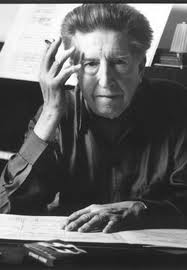 head of music production and left only in 1963 to dedicate himself to composing. In 1961 Alfred Cortot, the founder of École Normale de Musique de Paris, invited him to join the school. After Cortot’s death Dutilleux for a while served as the school’s president. Dutilleux assigned the first opus to his Piano Sonata, which he wrote for his wife, the pianist Geneviève Joy, in 1946-48, even though by then he had already been composing for at least 10 years. Even though he disavowed his earlier composition, his Sonatine for flute and piano (1943) is performed quite often.
head of music production and left only in 1963 to dedicate himself to composing. In 1961 Alfred Cortot, the founder of École Normale de Musique de Paris, invited him to join the school. After Cortot’s death Dutilleux for a while served as the school’s president. Dutilleux assigned the first opus to his Piano Sonata, which he wrote for his wife, the pianist Geneviève Joy, in 1946-48, even though by then he had already been composing for at least 10 years. Even though he disavowed his earlier composition, his Sonatine for flute and piano (1943) is performed quite often.
Although Dutilleux’s style was affected by Debussy and Ravel, he was a modernist who used atonality and complex rhythms. He was also a perfectionist, revising his compositions over and over. Here is Dutilleux’s sonorous Timbres, espace, movement (Timbre, space, movement), a 1978 composition for an unusual combination of instruments: woodwinds, brass, cellos, percussions, but no violins or violas. Timbres was commissioned by Mstislav Rostropovich, who gave the premier with the National Orchestra the same year. The piece carries a subtitle, “The Starry Night,” after the painting by Van Gogh. The Bordeaux Aquitaine National Orchestra is conducted by Hans Graf. And for someone who likes more austere music, here is his String quartet, Ainsi la nuit (“So the night”), which Dutilleux composed in 1976-76. It’s performed by the Belcea Quartet.
Adrian Willaert had an interesting life: a talented Franco-Flemish composer, he followed in the steps of Josquin des Prez, and then later established the Venetian musical school. Willaert was born in a small Flemish town of Rumbeke around 1490 (the same time as John Taverner, about whom we wrote last week). We know about his life from the writings of his student, the composer and music theorist Gioseffo Zarlino. Willaert went to Paris to study law but switched to music instead. One of his teachers was Jean Mouton, the composer of the Royal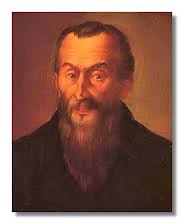 chapel. Around 1515 Willaert moved to Rome. Later, he entered the service of Cardinal Ippolito d'Este of Ferrara (it’s interesting that some years earlier Josquin was employed by Ippolito’s father, Ercole I d'Este, Duke of Ferrara). In 1527 Willaert received an exceptional appointment in Venice, becoming the maestro di cappella of the St. Mark cathedral. He held that post till his death in 1562. During that time he composed a large number of masses, motets, madrigals and other secular music. He also had many students, among them Andrea Gabrieli. Venetian music owes much to the architecture of St. Mark. The cathedral is unusual in that it has not one but two choir lofts, on each side of the main alter, with organs in both lofts. Willaert used this spatial separation to divide the choir in two and wrote “antiphonal” music, in which the melody is sung alternatively by both choirs. The Gabrielis, Andrea and Giovanni, made good use of it, and eventually this technique became known as Venetian polichoral style.
chapel. Around 1515 Willaert moved to Rome. Later, he entered the service of Cardinal Ippolito d'Este of Ferrara (it’s interesting that some years earlier Josquin was employed by Ippolito’s father, Ercole I d'Este, Duke of Ferrara). In 1527 Willaert received an exceptional appointment in Venice, becoming the maestro di cappella of the St. Mark cathedral. He held that post till his death in 1562. During that time he composed a large number of masses, motets, madrigals and other secular music. He also had many students, among them Andrea Gabrieli. Venetian music owes much to the architecture of St. Mark. The cathedral is unusual in that it has not one but two choir lofts, on each side of the main alter, with organs in both lofts. Willaert used this spatial separation to divide the choir in two and wrote “antiphonal” music, in which the melody is sung alternatively by both choirs. The Gabrielis, Andrea and Giovanni, made good use of it, and eventually this technique became known as Venetian polichoral style.
We’ll hear a beautiful madrigal by Willaert, O dolce vita mia, performed by the King’s Singers. And here is his motet Pater Noster as performed by another British ensemble, Magdala, directed by the founder, David Skinner.
PermalinkJanuary 2014. John Taverner and John Tavener. John Taverner, born around 1490 (the exact date is unknown), was one of the most significant composers of the early English Renaissance. John Dunstaple preceded him by 100 years, but Dunstaple exerted more influence on the burgeoning Burgundian music school than on the English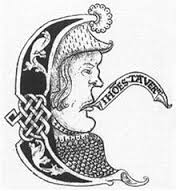 one. On the other hand, many composers followed Taverner: Thomas Tallis, 15 years his junior, William Byrd (born around 1540), then Thomas Morley (1557), John Dowland and John Bull, both born around 1563, and many more. Taverner lived and worked during the reign of Henry VIII and the English Reformation and, as a religious composer, was strongly affected by changes that the Church of England underwent during that period. In 1526 Taverner went to Oxford to become the master of choir of the Christ Church College, then called Cardinal College, which had been recently organized by Cardinal Wolsey. Wolsey, for a time a highly influential advisor to the King, became a major patron; in one episode he saved Taverner from accusations of concealing “heretical books,” noting that Taverner was "but a musician." Wolsey fell into disfavor with the King and died in 1530 while on trial. Taverner left Oxford the same year. Later he was hired by Thomas Cromwell, the chief minister to King Henry and one of the major leaders of the Reformation. With Cromwell he took part in the dissolution of the monasteries; it seems that at that time he stopped composing altogether, so practically all the music he wrote was Catholic and pre-Reformation. Taverner wrote eight Masses, several Magnificats, and a large number of motets. One of his most important masses was Gloria Tibi Trinitas, from which the style of instrumental polyphonic music, called In nominee, was born. All English Renaissance composers we mentioned above, and even the early Baroque composers up to Henry Purcell, wrote in this style. Here it is, performed by the Tallis Scholars, Peter Phillips directing. The picture above, taken from a "partbook" (a book of sheet music), containing Missa Gloria Tibi Trinitas, may be the likeness of John Taverner.
one. On the other hand, many composers followed Taverner: Thomas Tallis, 15 years his junior, William Byrd (born around 1540), then Thomas Morley (1557), John Dowland and John Bull, both born around 1563, and many more. Taverner lived and worked during the reign of Henry VIII and the English Reformation and, as a religious composer, was strongly affected by changes that the Church of England underwent during that period. In 1526 Taverner went to Oxford to become the master of choir of the Christ Church College, then called Cardinal College, which had been recently organized by Cardinal Wolsey. Wolsey, for a time a highly influential advisor to the King, became a major patron; in one episode he saved Taverner from accusations of concealing “heretical books,” noting that Taverner was "but a musician." Wolsey fell into disfavor with the King and died in 1530 while on trial. Taverner left Oxford the same year. Later he was hired by Thomas Cromwell, the chief minister to King Henry and one of the major leaders of the Reformation. With Cromwell he took part in the dissolution of the monasteries; it seems that at that time he stopped composing altogether, so practically all the music he wrote was Catholic and pre-Reformation. Taverner wrote eight Masses, several Magnificats, and a large number of motets. One of his most important masses was Gloria Tibi Trinitas, from which the style of instrumental polyphonic music, called In nominee, was born. All English Renaissance composers we mentioned above, and even the early Baroque composers up to Henry Purcell, wrote in this style. Here it is, performed by the Tallis Scholars, Peter Phillips directing. The picture above, taken from a "partbook" (a book of sheet music), containing Missa Gloria Tibi Trinitas, may be the likeness of John Taverner.
The English composer Sir John Tavener died recently, on November 12, 2013. He always claimed to be a direct descendant of John Taverner, even though their names were spelled slightly differently. Tavener was an unusual composer in that he wrote mostly religious music, and an unusual person: an Englishman who converted to Orthodox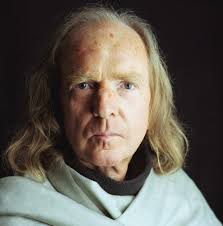 Christianity. Tavener was born in London on January 28th, 1944. When he was 12, he heard Stravinsky’s Canticum Sacrum, which, as he later said, “made me want to be a composer.” In 1968 Tavener wrote a cantata The Whale, based on the story of Jonah; it was widely noted. The Celtic Requiem was written in 1970. Benjamin Britten thought of it highly enough to persuade the Covent Garden to commission Tavener an opera (Thérèse was staged only in 1979 and was not very successful). In 1977 he wrote another opera, A Gentle Spirit, based on a story by Dostoevsky. The libretto was written by the Irish playwright Gerard McLarnon, a convert to Russian Orthodox Christianity. That same year Tavener also became a convert. Subsequently, Tavener wrote a number of pieces based on Orthodox Christian writings and Russian literature. The Protecting Veil (1988) for cello and strings, was suggested and popularized by the cellist Steven Isserlis. His Song for Athene was set to a text written by a Russian Orthodox abbess. It became very popular after it was performed during Princess Diana’s funeral in 1997. You can listen to it here, performed by the King's College Choir, Cambridge, Stephen Cleobury conducting.Permalink
Christianity. Tavener was born in London on January 28th, 1944. When he was 12, he heard Stravinsky’s Canticum Sacrum, which, as he later said, “made me want to be a composer.” In 1968 Tavener wrote a cantata The Whale, based on the story of Jonah; it was widely noted. The Celtic Requiem was written in 1970. Benjamin Britten thought of it highly enough to persuade the Covent Garden to commission Tavener an opera (Thérèse was staged only in 1979 and was not very successful). In 1977 he wrote another opera, A Gentle Spirit, based on a story by Dostoevsky. The libretto was written by the Irish playwright Gerard McLarnon, a convert to Russian Orthodox Christianity. That same year Tavener also became a convert. Subsequently, Tavener wrote a number of pieces based on Orthodox Christian writings and Russian literature. The Protecting Veil (1988) for cello and strings, was suggested and popularized by the cellist Steven Isserlis. His Song for Athene was set to a text written by a Russian Orthodox abbess. It became very popular after it was performed during Princess Diana’s funeral in 1997. You can listen to it here, performed by the King's College Choir, Cambridge, Stephen Cleobury conducting.Permalink
January 6, 2014. Francis Poulenc. The first several days of the year are rich in composers’ birthdays: three Russians (Mily Balakirev, Nikolai Medtner, and Alexander Scriabin), two Italians (Giovanni Battista Pergolesi and Giuseppe Sammartini, not to be confused with the more famous brother, Giovanni). Josef Suk, the Czech composer, the favorite pupil and son in law of Antonin Dvořák, was also born during the first week of the year,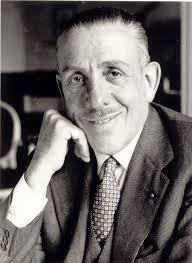 aswas the German composer, Max Bruch. A veritable constellation of smaller stars.
aswas the German composer, Max Bruch. A veritable constellation of smaller stars.
Francis Poulenc was also born in the first week of the year, on January 7, 1899 in Paris. He was brought up comfortably: his father Emil was a director of Poulenc Frères, a pharmaceutical company, which later became the much larger Rhône-Poulenc. When he was 15, Francis started piano lessons with Ricardo Viñes, a friend of Maurice Ravel’s (Viñes premiered many of Ravel’s piano compositions; he also championed the music of Claude Debussy, de Falla and Albéniz). A year later Poulenc was introduced to a group of avant-garde surrealist poets – Max Jacob (the oldest of them and Picasso’s best friend), Guillaume Apollinaire, Paul Éluard and Louis Aragon (some years later Éluard and Aragon would break up with the surrealists and join the French Communist Party). Poulenc started composing seriously around 1917 and in the next three years wrote a number of sonatas (for two clarinets, for piano four hands, for the violin) and songs, some on poems of Apollinaire. In 1920 he got involved with a group of young composers, all of them living on Montparnasse. The music critic Henry Collet called them Les Six. Jean Cocteau was to an extent the organizer, and Eric Satie was the musical leader. In addition to Poulenc, the group included Georges Auric, Louis Durey (probably the least interesting of them all), Arthur Honegger, Darius Milhaud, and Germaine Tailleferre, the only woman in the company. These particular musicians, while all good friends, were never formally organized, but the name stuck.
Probably the most significant piece Poulenc wrote in the period before the Second World War was his Concerto for Two Pianos. He premiered it, together with his friend the pianist Jacques Février, in 1932. Being openly gay, (in 1928 he dedicated his Concert champêtre for harpsichord and orchestra to a lover, the painter Richard Chanlaire), Poulenc proposed a marriage of convenience to a childhood friend, Raymonde Linossier. She refused but they remained good friends. In 1930 Linossier died and Poulenc fell into a depression. Six years later, in 1936 Pierre-Octave Ferroud, a composer and an acquaintance, also died, in a horrible road accident. His death deeply affected Poulenc. He went to the shrine of the Black Virgin in Rocamadour (the statue, made of black wood, is one of the most revered religious objects in France). There he had an epiphany of sorts, which affected him personally, and also influenced his compositional style. He started writing liturgical and religious pieces, something he had never done before: Litanies à la vierge noire were composed right after the visit in 1936; then, a year later, a Mass; later, in 1941, Exultate Deo, then Stabat Mater in1950 and many more.
Poulenc was active during the War, writing many songs and some incidental music. He also wrote a ballet, Les animaux modèles, staged by Serge Lifar at the Paris Opera. After the war he wrote two very important operas, Dialogues des carmélites in1956 and La voix humaine based on a play by Jean Cocteau, for a single voice, two years later. Poulenc died on January 30th of 1963.
Here’s his earlier piece, the already-mentioned Concerto for Two Pianos. It’s a 1962 recording, with Francis Poulenc and his friend, Jacques Février, the same pianists who had performed the Concerto during the premier 30 years earlier. Orchestre de la Société des Concerts du Conservatoire (it became Orchestre de Paris in 1967) is conducted by Pierre Dervaux.
Permalink